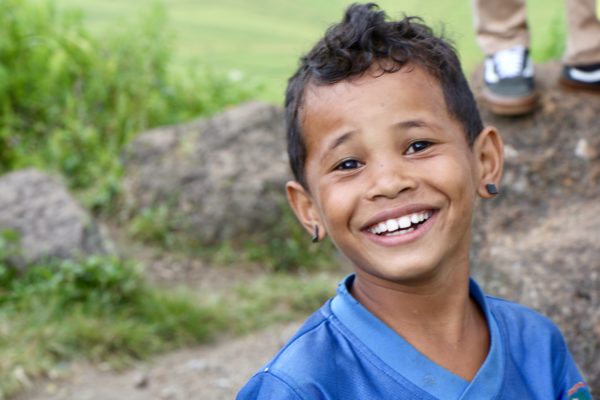The Easiest Piece In The Puzzle: Residential Solar Lights
Somewhere in the United Nations’ headquarters in New York there’s a list of things to do that will make life better for the world’s poor and dispossessed. It’s had many titles over the years; right now it’s filed under Millennium Development Goals (MDGs), which were set out in 2000. The desired outcomes are very familiar:
- Eradicate hunger
- Achieve universal primary education
- Promote gender equality and empower women
- Reduce child mortality
- Improve maternal health
- Combat HIV/AIDS, malaria and other diseases
- Ensure environmental sustainability
- Develop a global partnership for development.
These are supposed to be achieved by 2015.

Residential solar lights can replace unhealthy traditional fuels, like in this Indian home. Courtesy of NCIIA.
You couldn’t pick eight higher mountains to climb because success is entirely subjective. The whole process is about putting one foot in front of another and hoping you’re going in the right direction, especially when most of the world’s economists tell you that international development aid is pretty much a waste of time.
If the U.N. had chosen “A cell phone in every home” as a goal, in just the past 10 years it would be halfway to checking that box. Mobile technology has exploded in the developing world for two reasons: people in villages understand the value proposition of the devices making their lives better; and access and maintenance are nearly universal from Nigeria to Borneo.
There’s a ninth MDG just waiting to be checked: solar lights in every home replacing poisonous, and expensive, kerosene lamps. Actually, this is filed under MDG #7 (environmental sustainability) and is a piece of low-hanging fruit because economics make it a no-brainer. The complete cost of an easily rechargeable solar light is equal to two-three months worth of kerosene, and solar doesn’t coat people’s lungs with toxins. The only barrier right now is a lack of distribution and maintenance/recharging networks.
The U.N. finally started to understand the situation a few years ago when its number crunchers finally noticed cell-phones’ amazing growth. Last year, under the umbrella of a program called “Sustainable Energy For All,” the organization recognized that residential solar lights could help achieve many of the MDGs, especially those relating to women and children who suffer most from breathing kerosene fumes. Let’s not forget the 1,900 tons of CO2 that a billion kerosene lamps give off every year.
Today the United Nations and World Bank have partnered to bring better access to electricity and to clean household fuels for the poorest countries. By 2030, they want three results:
“achieve universal access to energy, including electricity and modern cooking and heating fuels; double the renewable share of power produced and consumed from 15% to 30%; and double the energy efficiency improvement rate.”
This is admirable, but these organizations have been trying to achieve similar energy improvements for decades with less-than-hoped-for results. Most have been larger scale infrastructure projects. The U.N.’s own reports cite the problem as “significant administrative roadblocks,” which means that in-country bureaucracy and business practices aren’t helping.
Residential solar lights don’t need regulatory approval; they don’t have to be part of aid programs. They are a simple consumer choice, much like vegetables, clothes or cell phones. If a solar light makes sense to a villager in Kenya, it will be bought and used without any muss or fuss. It is this simple.

An Indian entrepreneur readies solar lights for night-time use. This can be a strong local business in developing countries. Courtesy of The Guardian.
Health and environmental motivations, while vital, are not high up the priority lists of the 1.6 billion people who don’t have access to electricity. Cost, dependability and access are the primary factors. Once solar lights are available in every village, with a local entrepreneur to rent and manage them, they will become the night-time illumination norm.
Once this happens, the U.N. and other organizations will pat themselves on the back for another check mark on their MDG list. Yet their effect will have been minimal if they haven’t understood that renewable energy is blown by market forces just as much across the developing world as it is in the industrialized one. And understanding this, they could make in-home solar replacement happen all the faster by using their considerable financial backing to help create an entrepreneur-run distribution network that is just waiting to happen.
There are hundreds if not thousands of companies around the world producing dependable, inexpensive solar lights. There are hundreds of millions of potential customers whose lives can be made much better by these products. Getting them together should be a primary goal of any organization that feels the MDGs are achievable.
Chocolate Moose Media understands this, and Firdaus Kharas is starting to create a new set of public service announcements (PSAs), called The Solar Campaign, to help those in developing world understand why and how switching from kerosene lamps to solar lights is a beneficial and inevitable part of their future.
We see every solar producer, foundation, organization and association as a partner because residential solar lights are the best possibility for short-term poverty alleviation. We’ve set up a fund-raising campaign at Indiegogo to help produce and broadcast the PSAs in 73 languages across the developing world.
If you can see solar’s value proposition, please support us and help us share this message of positive change.




3 Comments
[…] technology across Africa and Asia. He’s now working on projects to communicate the efficacies of solar power and mobile-health applications with companies like Nokero and iheed. Both understand that local […]
Good article.Thanks.
Also, for those who’d like to learn more about, and get involved
in bringing solar to rural poor, I compiled relevant resources here:
http://bennu-solar.com/
Hope this helps,
Yotam
(http://www.linkedin.com/in/yotamariel)
Nice article. Thanks.
Also, for those who’d like to learn more about, and get involved in
bringing solar to rural poor, I compiled relevant resources here:
http://bennu-solar.com/
Hope this helps,
Yotam
(http://www.linkedin.com/in/yotamariel)